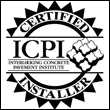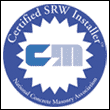
Exposed aggregate gives your concrete a unique look, allowing you to express a bit of your personal style. “Exposed aggregate” refers to the process of uncovering the aggregate, or the large stones or other material, that is mixed in with the concrete. Exposing it makes the surface more textured, and it creates a different look than the typical, flat, gray slab of most concrete surfaces.
The different types of exposed aggregate will influence not only the look of your finished surface, but also its performance. The design specialists at Triad Associates will walk you through all of your options, helping you understand how each will impact look and performance, to help you get exactly the results you want.
Here’s a brief overview of the different types of exposed aggregate to help you start the conversation with your hardscape designer:
Types of Aggregate
A wide variety of materials can be used for aggregate. All of them will result in a different look, feel, and performance for the surface of the concrete. Some popular aggregate options include:
- Gravel
- Crushed Stone
- Decorative Stone
- Pebbles
- Basalts
- Quartzite
- Crushed Glass
Granite and limestone are particular popular stone choices for aggregate. Aggregate comes in a wide variety of hues. The aggregate is usually very small, but it can come in varying sizes. Exposing more of the aggregate will also make it appear larger, which will change the look and make the surface rougher. Exposing more of the aggregate will reduce the slip, making the surface safer, but the more exposed the aggregate, the rougher the surface will feel on the feet.
Methods of Exposing Aggregate
Sometimes, when people refer to “types” of exposed aggregate, they don’t mean the material used, but the method used for exposing the aggregate. There are several methods that can be used to reveal the decorative aggregate beneath the surface layer of concrete paste
- Standard. The usual way to get aggregate into the concrete is to add it while the concrete is being mixed. After the concrete is poured and put in place, the top layer of concrete is gently wiped away while it is wet to reveal the aggregate.
- Topping. Once concrete is dry, a thin layer of specialty aggregate mix can be applied on top. Usually, this layer is about 1-½ to 2 inches thick.
- Seeding. After the concrete is placed, aggregate is pushed into the surface while it is still wet.
Each of these methods has its pros and cons, so it is best to understand those before you choose which is right for your project.
Hire the Design Pros at Triad Associates
The hardscape experts at Triad Associates are ready to help you get the beautiful, concrete areas you want to upgrade your home’s exterior. We install driveways, pathways, patios, and more. We are experts in all types of decorative concrete methods, including exposed aggregate. Call us today to schedule a consultation with a hardscaping professional and start designing your new exterior.



